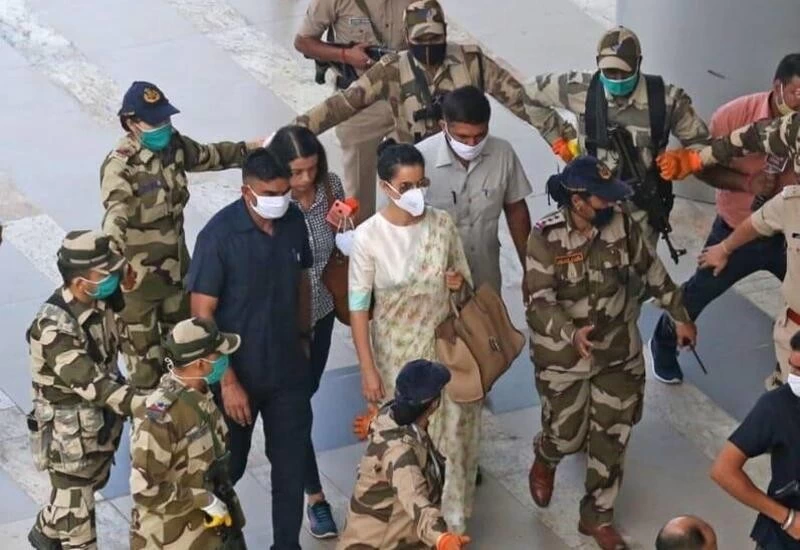Is the media, government and bollywood actor misleading the public on important issues in the name of justice of Sushant Singh Rajput?



What is Y plus security cover?

This blog is about crime and criminology where we talk about criminal's behavior and what are the reasons that compel a criminal to commit a crime.






Sushant Singh Rajput was found dead in his apartment in Bandra, Mumbai on 14 June. Initial investigations conducted by the Mumbai Police revealed that it was prima facie a case of suicide. However, no suicide note was found. The provisional post mortem report revealed that the cause of death was asphyxia due to hanging. On Wednesday, 19 August, the Supreme Court held that the FIR lodged in Patna, Bihar in the case of Sushant Singh Rajput’s death, was valid and the CBI was ordered to investigate the case. Here is what has happened in the case so far. The top court also upheld the FIR lodged in Patna by Sushant’s father KK Singh. The order came on the petition of actor Rhea Chakraborty seeking transfer of an FIR from Patna to Mumbai. Sushant’s family has alleged that Chakraborty ended the actor’s alleged suicide.
Two months after the suicide of actor Sushant Singh Rajput, the Supreme Court directed the Central Bureau of Investigation (CBI) to investigate the case. The court also asked the Maharashtra Police to assist in the investigation and hand over all the evidence collected in the case to the Central Investigation Agency. After the death of actor Sushant Singh Rajput, there was a panic in the entire Bollywood film industry that what was the need to sue a person of such calm and settled nature, many questions were answered in the media that it was very much told that Sushant Singh Rajput was walking in a mentally problem, his mindset was not going right, Kangana Ranaut gavea new twist tothis saying that Sushant Singh Rajput was banned in Bollywood pictures due to nepotism in the film industry. His mental balance deteriorated and he was undergoing treatment, and when he could not tolerate this much, he decided to take suicide, after which Sushant Singh Rajput’s father filed FIR against Riya Chakraborty and Showik Chakraborty for money laundering. Both of them were firstly got interrogated and then Showik got arrested. During interrogation, Rhea also revealed that Sushant Singh used to take drugs. Recently Rhea Chakraborty was arrested by CBI and during interrogation she has revealed few names from bollywood industries. Still CBI`s investigation is going on about what the reason behind Sushant Singh’s suicide.
On 8th September, actress Rhea Chakraborty was arrested by the Narcotics Control Bureau in Mumbai under charges outlined by the Narcotics Drugs and Psychotropic Substances Act. She is the eighth person to be arrested in relation to the investigation into the death on June 14 of actor Sushant Singh Rajput, with whomshe had a relationship. Her arrest comes after three consecutive days of interrogation by the Narcotics Control Bureau, during which Chakraborty admitted to procuring drugs for Rajput, the Bureau told the court. Satish Maneshinde, Chakraborty’s lawyer called her arrest a “travesty of justice”. “Three central agencies hounding a single woman just because she was in love with a drug addict who was suffering from mental health issues for several years and committed suicide due to consumption of illegally administered medicines, drugs,” Maneshinde said in a statement. Though drugs and addiction are fundamentally intertwined, the word “addiction” does not appear.
The Narcotic Drugs and Psychotropic Substances Act (1985)
The Narcotic Drugs and Psychotropic Substances Act (1985) of India under which she has been arrested. The NDPS Act is India’s primary piece of parliamentary legislature around drug use, and pertains to the possession, sale, purchase, production and use of narcotic or psychotropic substances.
The Narcotic Drugs and Psychotropic Substances Act, 1985, commonly referred to as the NDPS Act, is an Act of the Parliament of India that prohibits a person the production/manufacturing/cultivation, possession, sale, purchasing, transport, storage, and/or consumption of any narcotic drug or psychotropic substance. Following the 1971’s UN Convention on Psychotropic Substances, the Ministry of Health and Family Welfare, Government of India, established an Expert Committee to look into the issue of drug and alcohol use in India. India had enacted the Narcotic Drugs and Psychotropic Substances (NDPS) Act in 1985, which was amended thrice, latest in 2014. The primary aim of the NDPS was ‘to prevent and combat drug abuse and illicit trafficking’, an apparent emphasis on the supply reduction.
Ministry of Social justice and empowerment unveiled a National Action Plan for Drug Demand Reduction (NAPDDR). It has two affected-
Golden Triangle
•It is the region between the borders of Myanmar, Laos and Thailand.
Golden Crescent
•It is a second major production in Asia spamming across three Nations; Afghanistan, Iran and Pakistan.
•It is located at the crossroads of Central, South and Western Asia.
1.Geographical location
•India is the link between golden triangle and golden crescent and the worst affected areas are the north east (Manipur) and the north west (Punjab).
2.Changing cultural values, increasing economic stress and dwindling supportive bonds.
•According to a UN report, 1 million heroin addicts are registered in India, and unofficially there are as many as 5 million.
3.Education level has been found to have an impact on the risk of drug or alcohol abuse.
•National survey by the ministry of Social justice and empowerment found that 29% of the drug abusers were illiterates and a significant number of them came from lower strata.
4.Weak law enforcement and regulatory controls.
•Implementation of laws such as a narcotic drugs and psychotropic substance act 1985 by the state has been tardy.
•Often,the offices are also not adequately trained or equipped to undertake drug law enforcement.
•Many times, illicitly produced opium for pharmaceutical sectors is diverted to illicit channels in India.
1.Security challenges.
2.Threat to democratic dividend.
3.Impact on family.
4.Strong link between IDU and HIV.
•There should be e credible baseline survey and impact assessment studies.
•There is a need for strict monitoring of drugs production by the local enforcement agencies.
•Strong intelligence networks and development of website / portals.
In 2008, it was ruled that the punishment under NDPS Act would depend on the quantity of the drug seized by the police. However, the Supreme Court reversed the judgment earlier in 2020. As per the SC, traces of an offending drug is sufficient to declare the entire quantity. The punishment is rigorous imprisonment for no less than 10 years while it can be extended to 20 years. The offender is also liable to fine of no less than Rs 1 lakh. This may be extended to Rs 2 lakh.
Delhi NCR: 25 Men gang-rape woman after Facebook friend lures her into forest in Delhi O n Wednesday, a lady living in Delhi approached t...